
Clovelly is a strong contender for the title of Devon’s prettiest village.
Locked in a time warp, its charming cobbled streets, whitewashed cottages and picturesque harbour have changed little since the 1800s.
The village was once a bustling fishing port but today it’s a sleepy backwater, a honey pot for tourists escaping the hustle and bustle of modern life. Here are five reasons why Clovelly is picture perfect.
Quaint cottages and streets

Clovelly is a timeless place. Walking around its sleepy streets, it feels like the clocks were stopped in 1850.
There are no cars and no public transport. Nor are there any obvious signs of 21st Century life such as satellite dishes and modern gadgets.
The steep main street with tiny side lanes and alleyways takes you back to a time when donkeys and sledges were the main form of transport.

Over 150 years ago, Charles Kingsley, author of The Water-Babies, captured the essence of Clovelly:
“Suddenly a hot gleam of sunlight fell on the white cottages, with their grey steaming roofs and little scraps of garden courtyard, and lighting up the wings of the gorgeous butterflies which fluttered from the woodland down to the garden”.
This idyllic scene could describe the village as it is today because so little has changed since the 19th Century. Only the modern tourist shops stuffed with trinkets and postcards give away the reality – that we’re actually in 2015.
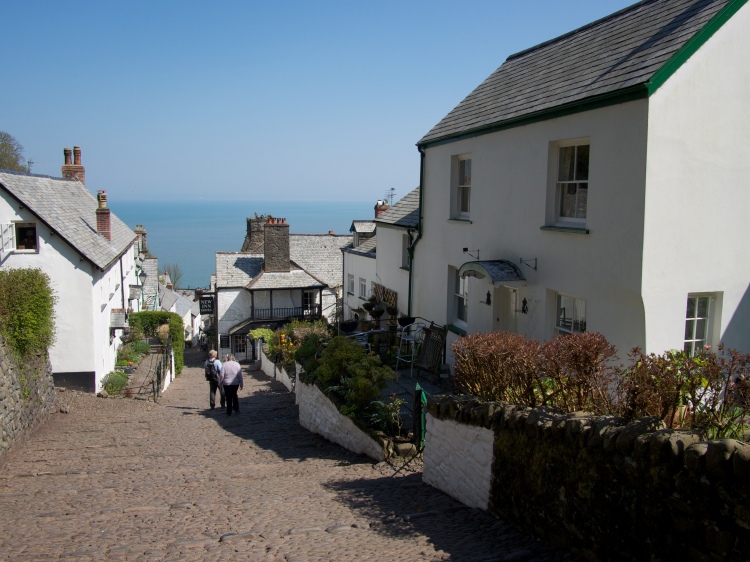
Walking up and down the village’s steep, cobbled streets is a challenge. The path to the top of the village zigzags its way upwards with steep bends at every turn. You can hear the huffing and puffing of visitors making their way down and then going back up again.
No wonder that the village’s famous donkeys are the best equipped beasts to make the journey.
It’s a strenuous walk but there are plenty of pretty views to distract from the aching limbs, if you take it easy and pace yourself.

Although I’m not keen on wearing flat, sensible shoes, this is one place where they’re a must – the steep gradient and slippery cobbles make it impossible to walk in high heels, flip-flops and teetering wedges!
The main cobbled street, known as ‘Up-along’ or ‘Down-along’, was constructed from large pebbles hauled up from the harbour.
I’m not sure how the residents cope with making the journey up and down the steep roads every day. It must be back-breaking work.
You don’t need to go to the gym if you live here. This is ready-made exercise ‘Victorian-style’.
Clovelly’s donkeys
Donkeys have been used as the main form of transport in Clovelly for centuries. These nimble creatures are perfectly adapted to coping with the village’s steep, uneven cobbled streets.
Although no longer used for heavy goods, the donkeys provide children’s rides and add an air of authenticity to the village’s street life.
Today, goods, groceries, furniture and heavy loads are transported by sledges because motor cars and vans can’t cope with the vertiginous slopes. But the donkeys still amble down the main street.

Donkey lovers will enjoy the stables at the top of the village where you can pet the animals and learn about their lives.
I was surprised to discover that all donkeys have a best friend, a fellow animal which they like to hang out with. Every donkey ‘train’ has two animals who are best buddies. When off duty, they have a special bond and friendship.
They also come in a wide variety of colours, shapes and sizes from small to tall, pale beige to chocolate-brown. I was tempted to take a couple home with me. Toby and Noah were my two favourites because they loved being fussed over.

These robust animals used to carry the heavy baskets of herring in special pack saddles up the narrow cobbled street from the harbour to the carriers’ carts.
They also transported fuel, building materials, food, drink, and the post. They even carried out the rubbish in an early example of green recycling.
When Clovelly became a tourist destination, the donkeys switched to carrying luggage to the Red Lion and New Inn hotels.
My favourite sign in the village is this historic ‘Rules for Donkey Drivers’ which can be found in the museum. I was surprised to see that donkeys used to carry people, although they had to weigh less than 9 stones 3 pounds.
With my weight coming in at under 9 stone, I could have had my own personal donkey transportation if I’d lived here in the 1920s.
Picturesque Harbour

Clovelly’s quayside dates back to the 14th Century when the village was a busy fishing port.
The village boats sailed out into the waters of Bideford Bay to harvest huge shoals of herring and mackerel.
They returned and unloaded their catch on the beach into baskets or ‘mawns’ from where they were carried up the steep cobbles by the village donkeys. Hence the term ‘donkey work’, no doubt.

By 1840 Clovelly boasted 60 to 70 boats engaged in the herring fishery. A Devon guidebook of 1859 mentioned that in favourable weather a Clovelly boat had “captured 9,000 herrings at a haul”.
Today, fishing continues, but on a limited basis with Clovelly crabs and lobsters being the prize catch. There is still some herring fishing in the autumn.
Ice cream cones have replaced fish as the big money earner for Clovelly but I’d recommend a trip to the fish shop near the harbour where the crab sandwiches are divine. Eat them on the sea wall whilst you’re watching the world go by.

The ‘Shipwreck Coast’
Smuggling and piracy were also common along this part of the north Devon coast in the 19th Century with numerous tales of pirates and illicit trading.
Clovelly was part of what was dubbed ‘the shipwreck coast’ with regular storms and sinkings. There’s many tales of shipwrecks – and I was amazed to hear about a modern boat that had to be rescued when it got into trouble only a few months ago.
The treacherous cliffs and foreshores around its bay made landing a boat difficult especially in bad weather, even with its sheltered harbour, a safe bolt hole for many passing ships.
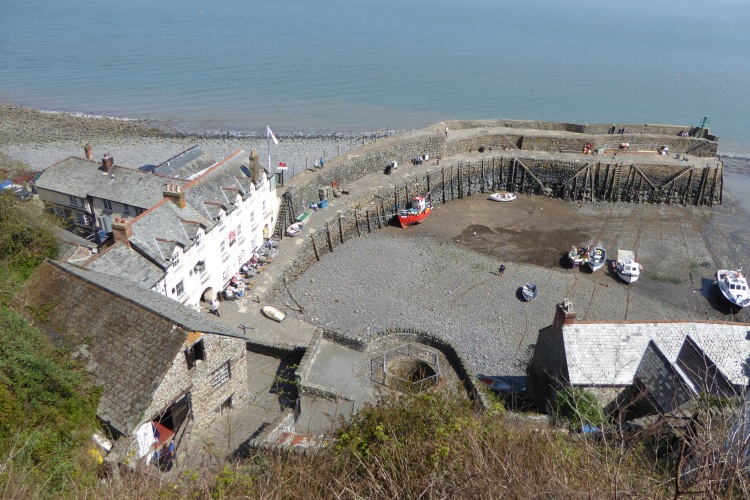
One day in the 1800s, there were four incidents of multiple shipwrecks at Clovelly, demonstrating the dangers of this rocky coast.
Launching a ship could be a potentially perilous event with huge waves crashing over boats at the harbour entrance during bad weather.
Historic records show that the Hartland peninsula suffered 10 shipwrecks for each mile during the 19th Century whilst in 1821, a huge storm claimed the lives of over 30 fishermen.

Building the harbour at Clovelly must have been a dangerous and difficult job, given the steep roads down to the stony beach which prohibited the use of machines to move the rocks.
The villagers had to drag huge boulders across the foreshore to build the quay, working only at low tide, using ropes and pulleys with some physical force.
Today, there are still a few boats and you can enjoy the ambience of this quiet bay and the excellent views out across the Bristol Channel.

For a touch of reality, you can discover how fishermen’s families lived in the 1930s at the small cottage in the main village.
Life as a fisherman was tough so the cottage is frugal and simple.
There’s a parlour decorated with domestic knickknacks and basic cottage furniture as well as a tiny kitchen. Upstairs there are two small bedrooms, a sail loft, and an attic complete with straw mattresses. These were different, harder times.

Literary Connections
Wandering around the village, I wouldn’t have been surprised if Clovelly’s most famous resident, the Victorian writer Charles Kingsley had popped out of one of the cottage doorways on his way to the local church.
The author lived in Clovelly as a child and returned as an adult many times, staying at the Kingsley Cottage, barely changed since his last visit.
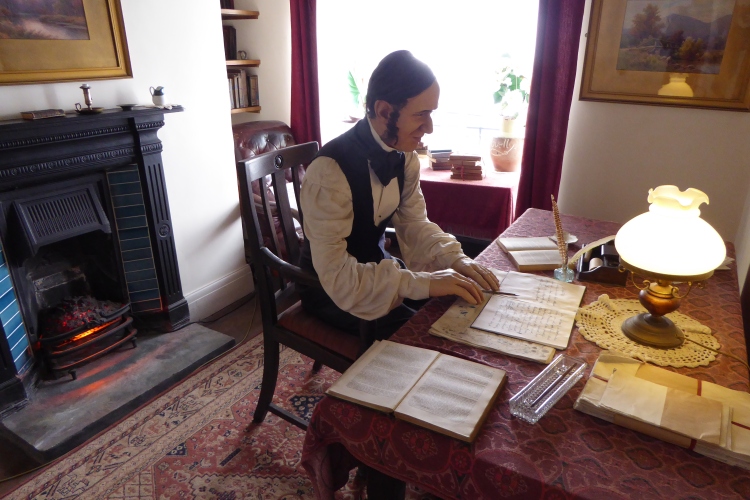
There’s a small museum with scenes from Charles Kingsley’s life and information about his illustrious career.
His father was rector of the village until 1836. Growing up in the village, Clovelly and the north Devon coast were lifelong influence on Kingsley who returned to the village time and again for literary inspiration. He also wrote one of his best-loved novels, Westward Ho! in Clovelly.
One of Kingsley’s most famous poems tells the story of three fishermen’s wives waiting in vain for their husbands during a terrible storm in nearby Bideford Bay.
Great wild walks
Beyond the village, there’s some of Devon’s most beautiful countryside so why not take a walk along the coastal path to Mouthmill Cove or Harbour Viewpoint?
Escape from the summer crowds with one of two stunning walks starting from the Clovelly visitor centre. One walk takes you to the west along dramatic coastal scenery whilst the other runs east along the cliff tops. Pick up a map with the detailed routes from the visitor centre.

The Mouthhill Cove walk is 4.5 miles (there and back) but we cheated and turned back halfway. Either way, you’ll be rewarded with stunning views of the coastline especially in the later stage of the walk when the scenery opens up with panoramic views along the coast.
Along the route you’ll walk through wooded glades, hidden coves and hay meadows whilst also encountering features such as Angel’s Wings, a lovely shelter built in 1826 as a viewpoint for Lady Chichester.
The walk is relaxing but my legs were exhausted from walking around Clovelly’s steep streets earlier in the day. Perhaps it’s a good idea to start with this gentler walk?

We didn’t manage to complete the Hobby Drive walk with its magnificent glimpses of the harbour and Bideford Bay. What a good excuse for a return visit next year.
The Hobby Drive route (3 miles) boasts a stunning panorama of Clovelly’s historic quay as well as glimpses of Bideford Bay. Look out for the gorgeous carpets of bluebells in the woodland during the spring.
Whichever walk you choose, there is interesting wildlife, from birds (stonechat, linnet, woodpecker, peregrine falcons) and butterflies to wild flowers and deer at dusk.
Picture Perfect?

So is Clovelly the prettiest village in Devon and does it justify the hype?
It’s hard to argue with the ‘most scenic village’ tag because so little has changed here in the last 100 years. With traffic-free streets, quaint cottages, a lovely harbour and bucket loads of heritage, Clovelly is a must-see attraction.
Critics may argue that it’s a ‘historic theme park’ preserved in aspic. But Clovelly is also special because of its strong sense of place and time.
When you close your eyes, you can imagine what villagers might have felt, smelt and seen 100 years earlier. That’s a feeling that is hard to beat.
Go experience Clovelly for yourself – but don’t forget your walking shoes!
Tammy’s Travel Guide – Clovelly, Devon
Clovelly is located near Bideford on the north Devon coast in the South West of England. It’s easy to get to by car or coach trip but expect to pay an entry fee to the village which is privately owned.
The village is owned by a single family who look after the properties to retain their character. Entrance tickets are around £20 for a family or £6.95 per adult and can be bought at the visitor centre. There are plenty of activities to justify a full day visit to Clovelly.
For those unable to cope with the steep walk, there is a mini van service down to the harbour via an alternative route if you’re worried that the route through the main village might be too strenuous.
Whilst in Clovelly, look out for boat and fishing trips including short cruises up the coast and boat tours to nearby Lundy Island, a fantastic wildlife haven for seabirds in the summer.
Anglers can enjoy a touch of fishing from the harbour wall and permits can be bought from the Harbour Master’s office.
History lovers can book one of the Clovelly’s Village Tours to learn about the heritage of the fishing village. In the summer the historic lifeboat house is also open to visitors.
Love Clovelly’s donkeys? Why not join Clovelly’s donkey courses which run from January to June where you can spend a whole day learning about basic donkey care, feeding, grooming and management.
Look out for the famous donkeys on the village streets, down by the harbour front or at the Donkey Stables close to the visitor centre. You can sometimes see the donkeys in their meadow at the top of the village or in the woods during winter.
If you’re a horticulture fan, don’t miss the kitchen gardens at Clovelly Court near the entrance to the village.
The sheltered sunny climate of the walled garden protects the plants from the wind and elements – look out for apples, pears, quinces, mulberry trees and Chinese gooseberries. Inside the restored Victorian glasshouses you’ll find apricots, peaches, nectarines, melons, grapes, lemons and figs.
Looking for somewhere to stay in Clovelly? There’s hotel accommodation at the Red Lion and the New Inn as well as several B and Bs offering rooms. Caravans and camper vans are well-catered for in the surrounding areas near Bideford.






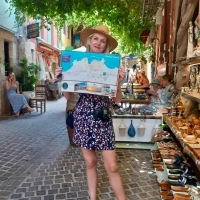

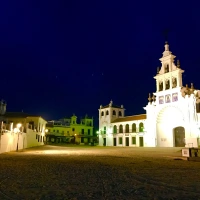
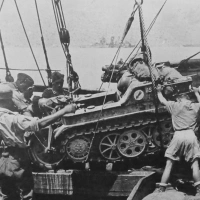


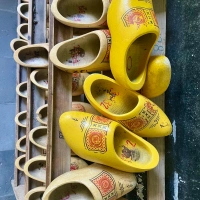
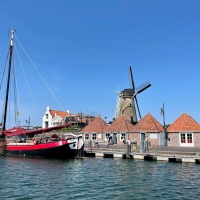
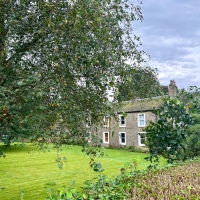
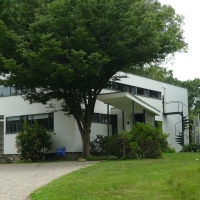

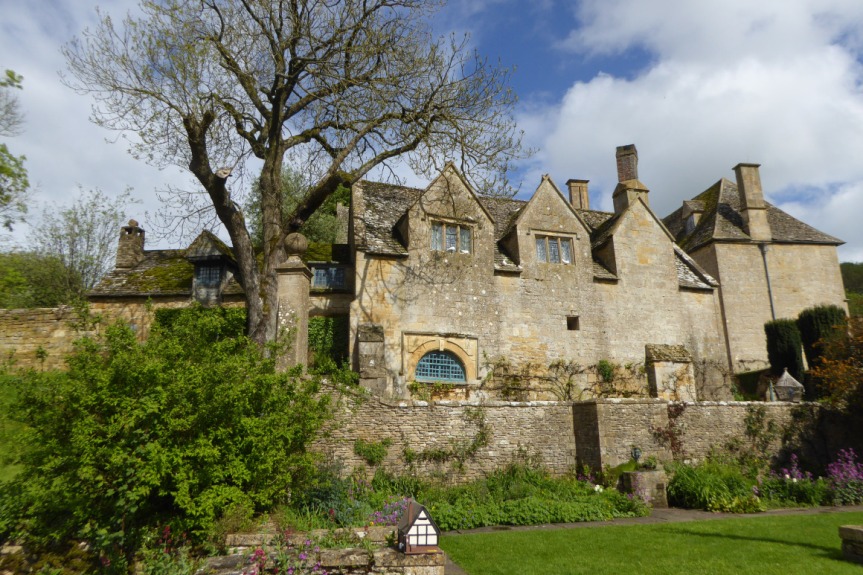



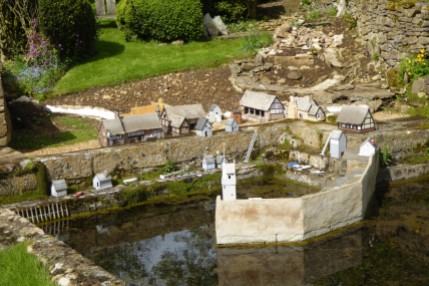



Beautiful photos – have just added your link to my walking blog as we were there at the weekend. Thanks
Thanks!
It’s a fab place and the nearby coastal walk is brilliant too.
It was so lovely to read and see a recent TV program about Clovelly it brought so many childhood memories back, donkey rides and mum and dad buying us 3 girls small pieces of pottery from the donkey sellers. We have some great photos to look back on, one where my sister Janette with a Marmet monkey on her shoulder – a very different world back in the 60’s. I am going to re visit and hopefully book accommodation and reflect😊